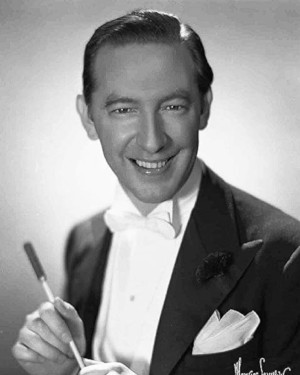Hal Kemp — Music Videos
Play All Hal Kemp tracks
Musical Style
Hal Kemp's music was a delightful blend of jazz, swing, and pop, which captivated audiences during the 1930s. His orchestra, known for its tight-knit, polished sound, was a beacon of sophistication and elegance. Kemp's distinctive musical style was characterized by a velvety smooth saxophone section, deftly punctuated by the trumpet's contrasting notes. His ability to produce a well-balanced, harmonious sound was a key part of his appeal, and his music was both accessible and highly enjoyable. The orchestra's most famous songs, such as "There's a Small Hotel" and "Love for Sale," were instant hits, showcasing not only Kemp's musical prowess but also his knack for choosing great material.
Career Highlights
Hal Kemp's career was marked by a series of impressive achievements. He formed his first band while still a student at the University of North Carolina. After graduation, Kemp and his orchestra toured extensively throughout the United States, rapidly gaining popularity. In 1930, they secured a contract with Brunswick Records, which marked the beginning of their national fame. Over the next decade, Kemp and his orchestra recorded a series of hits, including the chart-topping "Lullaby of Broadway" and the timeless classic "Three Little Fishes." Kemp's orchestral arrangements were renowned for their sophistication and unique style, making him a significant figure in the Big Band era. Tragically, Kemp's life and career were cut short by a car accident in 1940, but his music's impact has endured, earning him a posthumous induction into the Big Band and Jazz Hall of Fame in 1992.
Cultural Impact
The influence of Hal Kemp's music extended far beyond the dance halls and radio stations of the 1930s. His distinctive style and innovative arrangements helped shape the popular music of his era, setting the stage for the swing and big band music that would dominate the following decades. His music captured the spirit and energy of the time, offering a form of escapism during the difficult years of the Great Depression. Moreover, Kemp's sound was an essential part of the cultural fabric of the era, influencing not only musicians but also dancers, filmmakers, and the broader public. His songs continue to be enjoyed by fans of all ages, testament to their timeless appeal and enduring influence. Indeed, Kemp's music is more than just a nostalgic echo of the past—it is a vibrant part of our shared musical heritage.
Other Artists
Discover more voices we think you'll enjoy right now.
